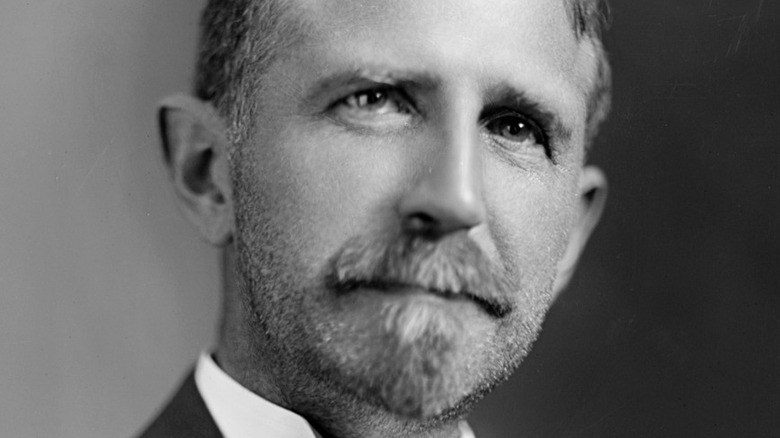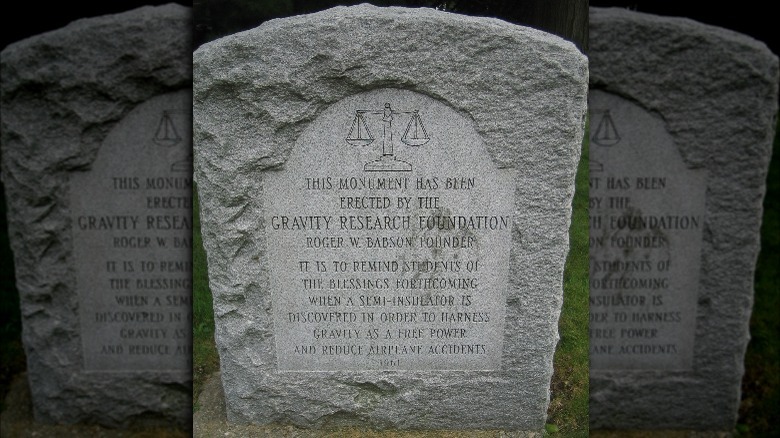The Wild True Story Of The Man Who Tried To Protect People From Gravity
Although gravity does us the favor of keeping un on Planet Earth so that we don't fly off into space, it is also the cause of quite a bit of pain and suffering. Bike accidents, falling grandmas, musician-killing plane crashes. All of these and other painful incidents are due to the planet's pesky tendency to pull us and everything else on it down at 9.8 meters per second per second.
Most of us just accept that gravity is an essential part of life and try our best not to let it smash our heads open on a sharp rock or break our wrists at the skatepark. But one man in the mid-20th century refused to admit defeat. As Popular Science reports, Roger W. Babson had a dream of creating a device to shield us from gravity. The successful businessman was the first to predict the stock market crash of 1925, as well as the Great Depression that it resulted in, and he claimed to have done so using Newton's Third Law of Motion: for every action there is an equal and opposite reaction.
Babson lost both his sister and his son to drowning accidents, and he blamed the gravity that pulled them under the water for their deaths. So he set out to do something about the wicked natural phenomenon.
Babson founded an institute to research ways to shield people from gravity
In 1948, Babson published a paper titled "Gravity — Our Enemy Number One," in which he held the fundamental force responsible for "millions of deaths each year," as well as "circulatory, intestinal and other internal troubles." That same year, he also founded the Gravity Research Foundation (GRF) in hopes of fomenting scientific inquiry into combating the Earth's pull on people. By the 1960s, the GRF was doling out grants for anti-gravity research that may one day result in a "partial insulator" from gravity that, in his mind, was to be "a great blessing to mankind." The grants also came with engraved monuments to his patronage of the research.
According to The Vintage News, the monolith his foundation gave to Tufts University is inscribed with text saying that it was put there "to remind students of the blessings forthcoming when a semi-insulator is discovered in order to harness gravity as a free power and reduce airplane accidents." While it may be easy to judge Babson's ideas, his motives were clearly virtuous.
The GRF still exists to this day, but it has altered its main purpose. It no longer aims to create a gravity shield, but rather to foment general research into gravity. To achieve this, it conducts an annual essay contest on any kind of research related to gravity, which is highly respected in the scientific community. Past winners include physicists like Bryce DeWitt, George Smoot, and Stephen Hawking, among others.

